How to Study - Part 3 Mind Maps & Flash Cards
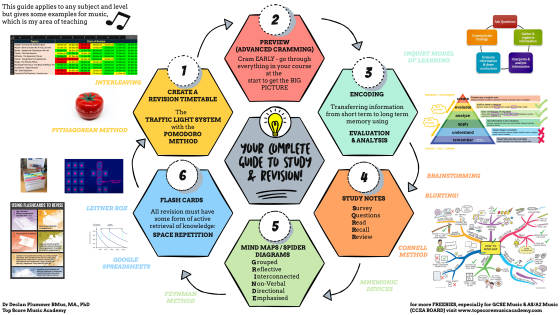
How to create and use Mind Maps to encode and when to use Flash Cards to practice recall and spaced repetition.
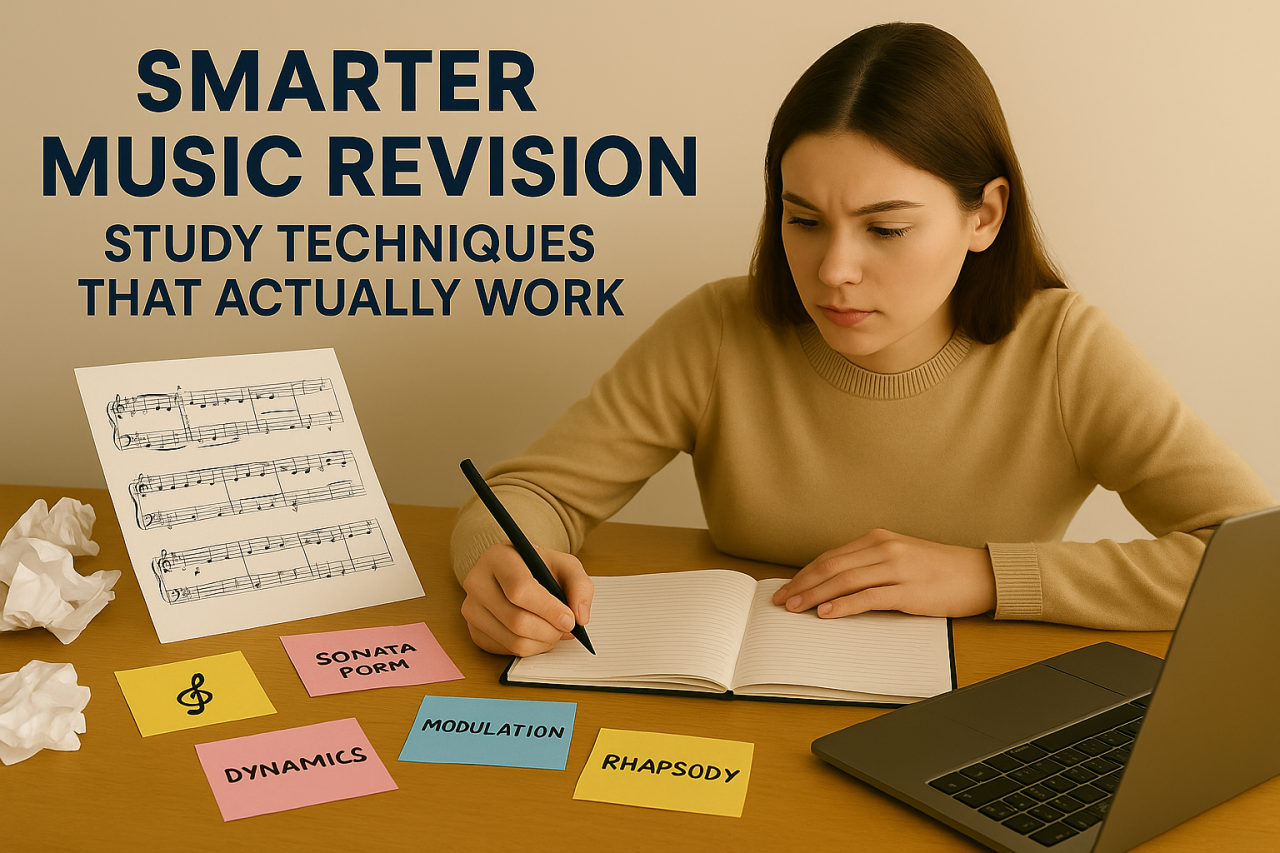
The Power of Mind Map Encoding and when to use Flash Cards!
If you’ve ever found yourself highlighting pages of notes or rewriting your music analysis for the fifth time and still not remembering anything, you’re not alone. Many GCSE and A-Level Music students spend hours revising, but very few are using the most effective techniques to retain information. According to music educator Declan Plummer, the secret to successful study isn’t working harder — it’s working smarter. In this guide, we’ll explore proven study techniques like GRINDE mind mapping and flashcards — tools designed to turn passive revision into active, long-term learning that actually sticks.

1. Why Traditional Revision Doesn’t Work for Music
Let’s start with the biggest myth in revision: the more time you spend, the better you’ll remember. Unfortunately, that’s not how your brain works. Highlighting, re-reading, and copying notes might feel productive, but they only activate short-term memory. You recognise information instead of truly learning it. When the exam comes, your brain can’t retrieve the details you skimmed over. In music — where analysis, composition, and performance all rely on critical understanding — this approach just doesn’t cut it.
Declan teaches students to move away from memorising facts and towards encoding, the process of actively transferring information into long-term memory. That means thinking, questioning, comparing, and doing. When you engage deeply with music, your brain starts building lasting neural connections — the kind that hold strong under exam pressure.

2. The GRINDE Method: A Smarter Way to Revise
The GRINDE Method is a practical framework that mirrors how your brain actually stores information. It makes revision interactive, structured, and creative — perfect for subjects like music where everything is connected.
GRINDE stands for:
- G – Group: Organise related ideas together.
- R – Reflective: Think critically about what you’re studying.
- I – Interconnections: Link ideas logically and visually.
- N – Nonverbal: Use colours, symbols, and images to reinforce learning.
- D – Directional: Show how one idea leads to another.
- E – Emphasis: Highlight what’s most important.
When you use GRINDE, your revision becomes more like composing — you’re not just collecting notes, you’re creating structure, flow, and meaning.

3. G – Group: Organise Musical Knowledge
Grouping is all about seeing patterns. Instead of treating every set work as separate, group them into logical clusters.
For example:
- By style – Baroque (Bach, Vivaldi), Classical (Mozart, Haydn), Romantic (Chopin, Berlioz).
- By texture – Polyphonic, homophonic, contrapuntal.
- By feature – Use of sequence, modulation, ornamentation, or dynamics.
When you organise knowledge this way, your brain builds “families” of information. In an exam, one idea triggers another — so remembering a key feature of Bach helps you recall something similar in Handel or Vivaldi.
Declan compares this to phrasing in music: each idea flows naturally into the next, creating a coherent understanding instead of isolated facts.

4. R – Reflective: Think, Don’t Just Memorise
Your Mind Map should reflect your thought processes - don't be afraid if it's messy when you start as it will become more organised the more you return to edit and re-edit the mind map. Messy parts should you where you need to focus your study more and eventually your mind Mao will become a very important revision toll that reflects your super-organised mind!
Reflection also turns information into understanding. Instead of just noting that a composer used a diminished seventh chord, ask why.
Try these reflection prompts:
- Why did the composer choose this particular harmony?
- What emotional effect does this rhythm or texture create?
- How does instrumentation support the piece’s character?
When you reflect, you’re engaging higher-order thinking — moving up Bloom’s Taxonomy from “remembering” to “analysing” and “evaluating.” This is exactly what examiners reward in long-answer questions.
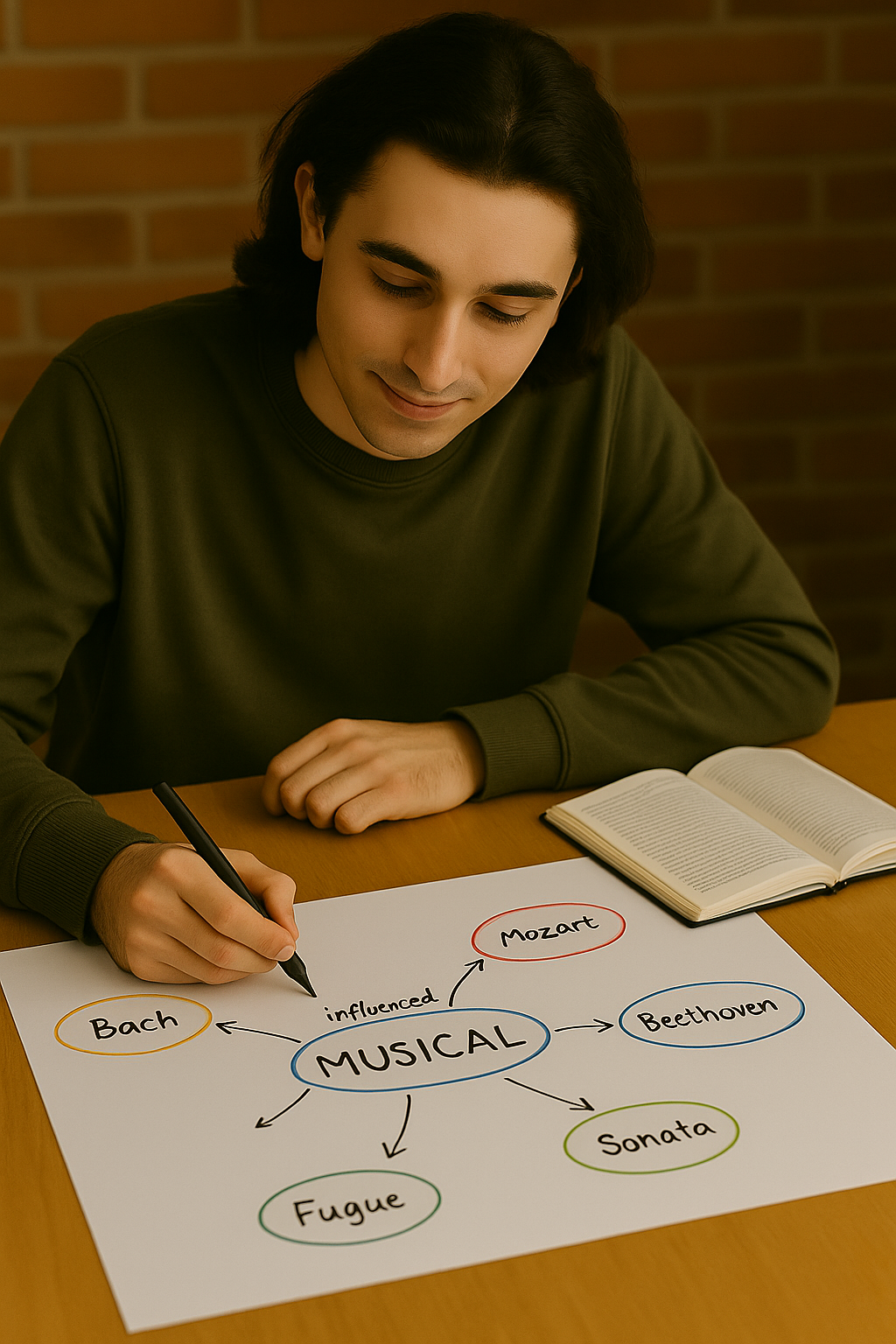
5. I – Interconnections: Build a Web of Knowledge
Music doesn’t exist in isolation. Every concept, period, and composer connects to something else. When you explore interconnections — like comparing how Mozart and Beethoven handle sonata form, or how Handel’s choral writing influenced later composers — you make your learning richer and easier to recall. Try drawing lines between related composers or features on a mind map. Each line strengthens a neural connection, meaning your brain retrieves information more easily later. Interconnection is also key for composition: when you recognise how motifs evolve, modulate, or reappear, you start to apply the same techniques in your own writing.
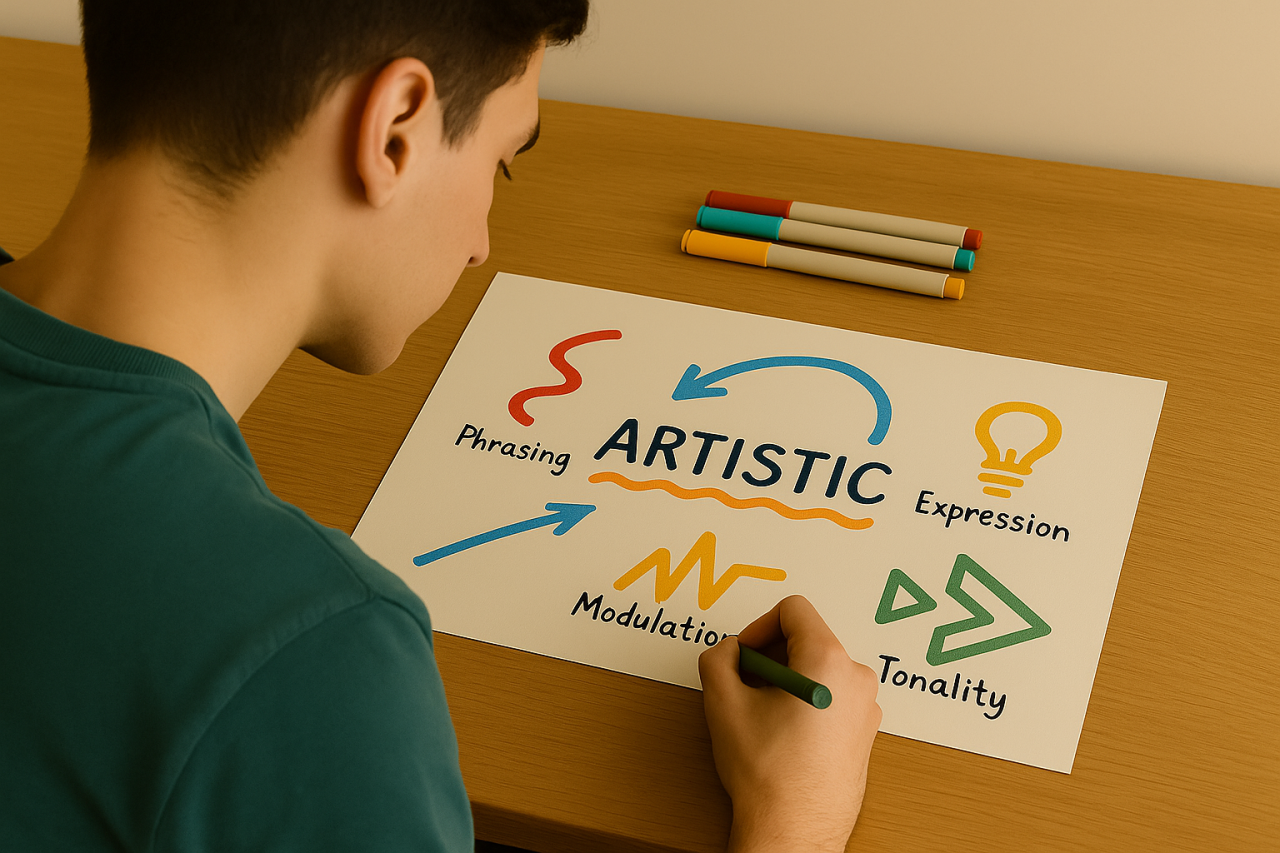
6. N – Nonverbal: Use Colours, Shapes, and Images
Visual learning is incredibly powerful. Studies show that the brain processes images 60,000 times faster than text. In music study, this means turning your notes into visuals that mirror musical movement. For instance:
- Draw waves for crescendos or phrasing.
- Use arrows to show modulation or transitions.
- Use colour to differentiate texture or tonality (e.g., blue for minor keys, yellow for major).
Declan encourages students to make their notes artistic. The more your notes look like music — expressive, structured, and full of shape — the better your brain will remember them.
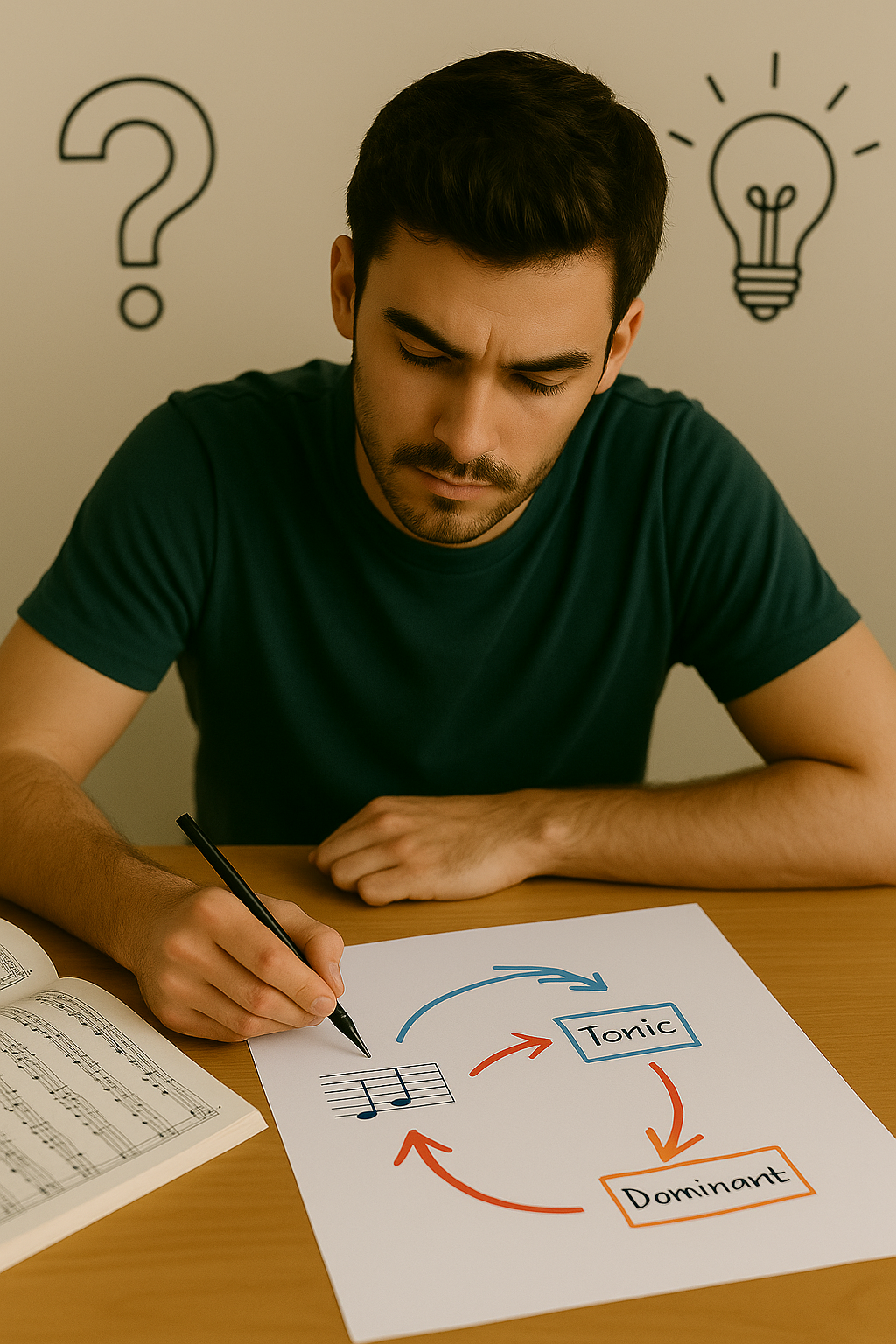
7. D – Directional: Show the Flow of Ideas
Music moves — and so should your study notes. Directional learning means showing how one idea leads to another. For example, trace how a motif evolves across a movement, or how harmony changes from tonic to dominant and back again. In your mind maps or diagrams, use arrows to connect points logically. This creates a mental “map” that mirrors musical development. When revising, you’re not just remembering isolated details — you’re following a journey through sound and structure.

8. E – Emphasis: Focus on What Matters Most
Effective study is about prioritising. Not every fact deserves equal attention. Use three levels of emphasis:
- Primary ideas – main structures, themes, or key stylistic traits of the period.
- Secondary ideas – ideas that key coming back or dramatic changes in the piece where 4-6 new things happen at once!
- Details – any ideas that happen over a long period of time or they're continuously repeated.
Using colour, bold text, or symbols helps your eye focus on what really matters. When revising under time pressure, this visual hierarchy helps you recall information instantly.

9. Why Mind Maps Work So Well
Your brain doesn’t think in straight lines — it thinks in links. That’s why mind maps are so effective for music revision. A well-made mind map lets you visualise relationships between elements like melody, harmony, texture, and context. By repeatedly reviewing and redrawing your mind maps, you strengthen both memory and understanding. Each time, you’ll see new patterns emerge and NEW RELATIONSHIPS
- the act of discovering new relationships for yourself is what pushes such information into your long-term memory!

10. Flashcards: Your Secret Weapon for Quick Recall
Flashcards are another invaluable tool — when used properly. Don’t just flip through them; use active recall. Look at the question side first and try to answer from memory before checking the reverse.
Use flashcards to revise:
- Definitions / Analytical Terms (e.g., cadence types, ornamentation).
- Composer facts (e.g., key works, dates, stylistic traits).
- New Relationships you found between facts (e.g., what is the relationship between [this] and [this]?)
Digital tools like Quizlet and Anki use spaced repetition, meaning the app automatically tests you more on information you forget. This method drastically improves long-term retention without the stress of last-minute cramming. Always keep your flash cards updated - try to stop it going above 50 but new ones should be added all the time and old ones combined or eventually discarded (if you easily remember it!).
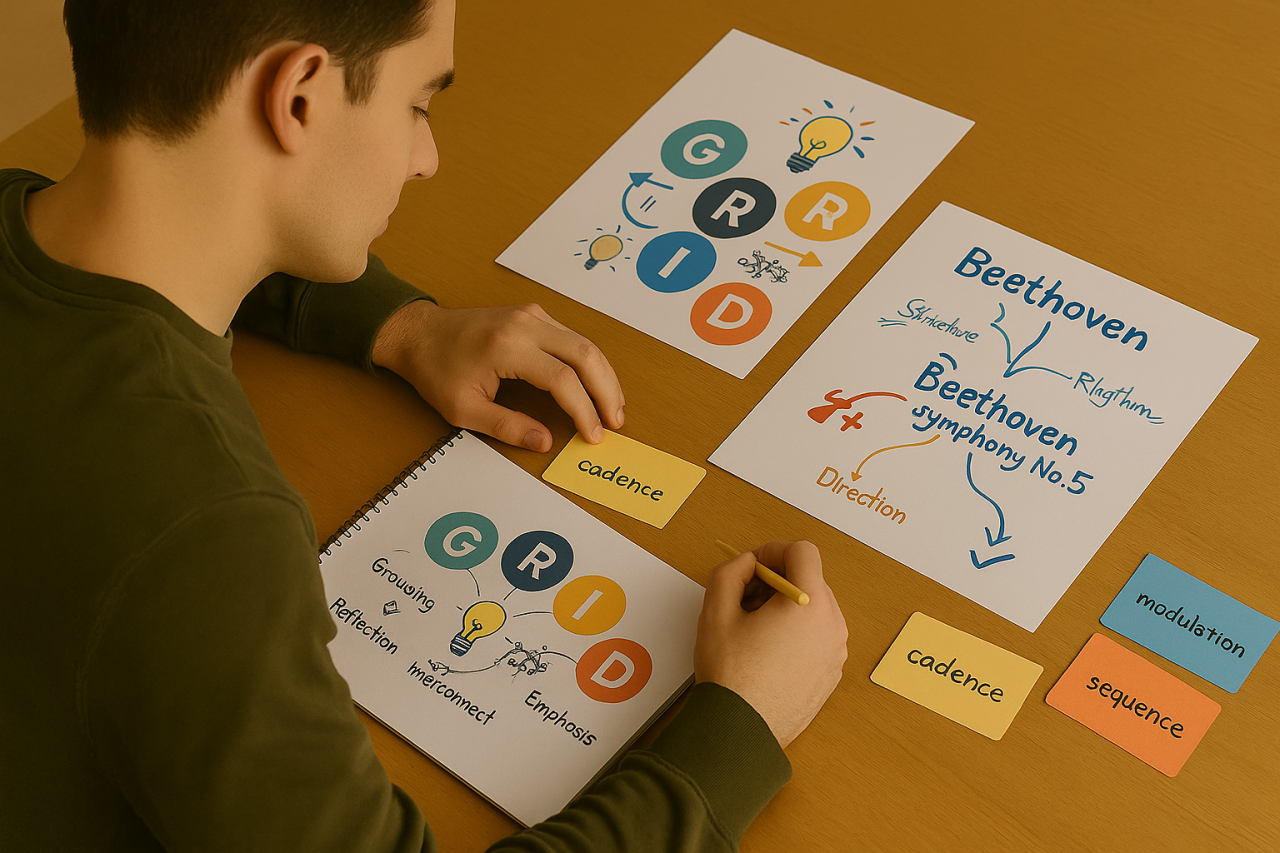
11. Combining GRINDE Mind Maps, and
Flashcards
Each of these tools reinforces the others.
- Use GRINDE Mind Maps to plan and structure your mind maps and find new relationships.
- Use flashcards to fine-tune your recall.
After every session, take five minutes to teach the material aloud — even if it’s to an empty room. This “Feynman Technique” forces you to simplify complex ideas, revealing any gaps in your understanding.

12. Smarter Study Habits for Music Students
Beyond the methods themselves, how you manage your time matters just as much. Here are five habits every music student should try:
🎯 Use the Pomodoro Technique
Study for 25 minutes, then take a 5-minute break. After four sessions, take a longer 20-minute rest. This rhythm prevents burnout and keeps focus sharp.
🎧 Mix your revision modes
Alternate between analysis, composition, listening, and performing. This variety strengthens understanding and prevents boredom.
💬 Teach someone else
Explaining a concept to a friend or parent activates recall and forces clarity — two of the strongest indicators of mastery.
💤 Prioritise sleep
Your brain consolidates memory during deep sleep. Staying up late to cram can undo hours of work.
📅 Start early
Advanced cramming — previewing material before your teacher covers it — helps you absorb lessons faster later on.
These techniques turn study from a chore into a consistent, sustainable routine.

🎓 Conclusion: Study Music Smarter, Not Harder
Studying music shouldn’t feel like a marathon of memorisation. The most successful students understand how they learn, not just what they learn.
By using the GRINDE method, creating visual mind maps, and practising active recall through flashcards, you’ll move from passive note-taking to active, creative learning.
These approaches don’t just prepare you for exams — they make you think like a musician: analytical, reflective, and expressive.
Start small. Try applying GRINDE to one topic this week — perhaps analysing a set work using mind maps and a few flashcards. Within days, you’ll notice your recall improve and your confidence soar.
And if you want structured guidance, consider working with a qualified music tutor who can tailor a study plan to your goals. Smart studying is an art — and every great musician knows how to practise the art of learning.
If you would like to know more about How to Study and get all the best tips from an expert educator, check out the following:
FREE Guide to Study (Handout for the Course)

For full details click here 👉 Free Guide to Study
OR Check out the following:
The Complete Guide to Study
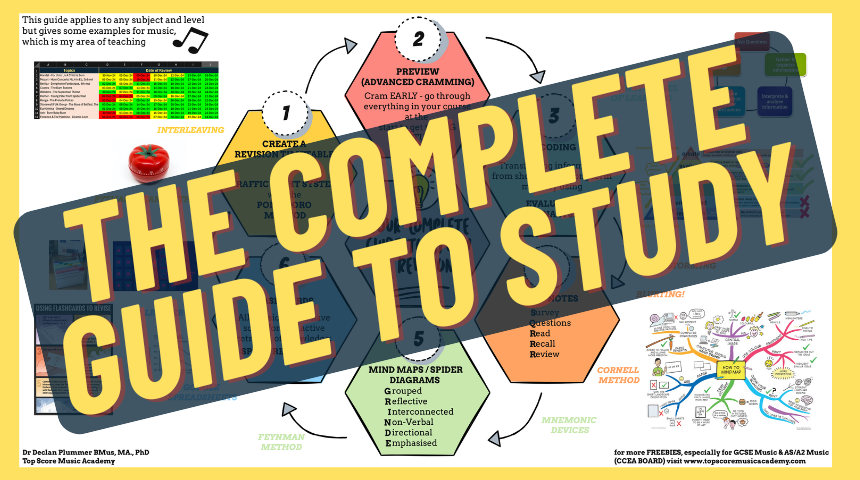
✅ 3+ hours of high-quality on-demand video lessons
✅ Dozens of downloadable handouts, worksheets, and templates
✅ Interactive quizzes to test understanding
✅ Step-by-step demonstrations of study methods
✅ Real-world examples
✅ Lifetime access and future updates
✅ Direct feedback opportunities from the instructor
All the for only £19 one-time purchase! That's right - it's cheaper than a textbook!
For full details click here 👉 The Complete Guide to Study Course
Also check out our other blogs:
Part 1 How to Study - Preparation & Organising
Part 2 How to Study - Encoding & Note-Taking
Categories: : How to Study
 Declan Plummer
Declan Plummer 